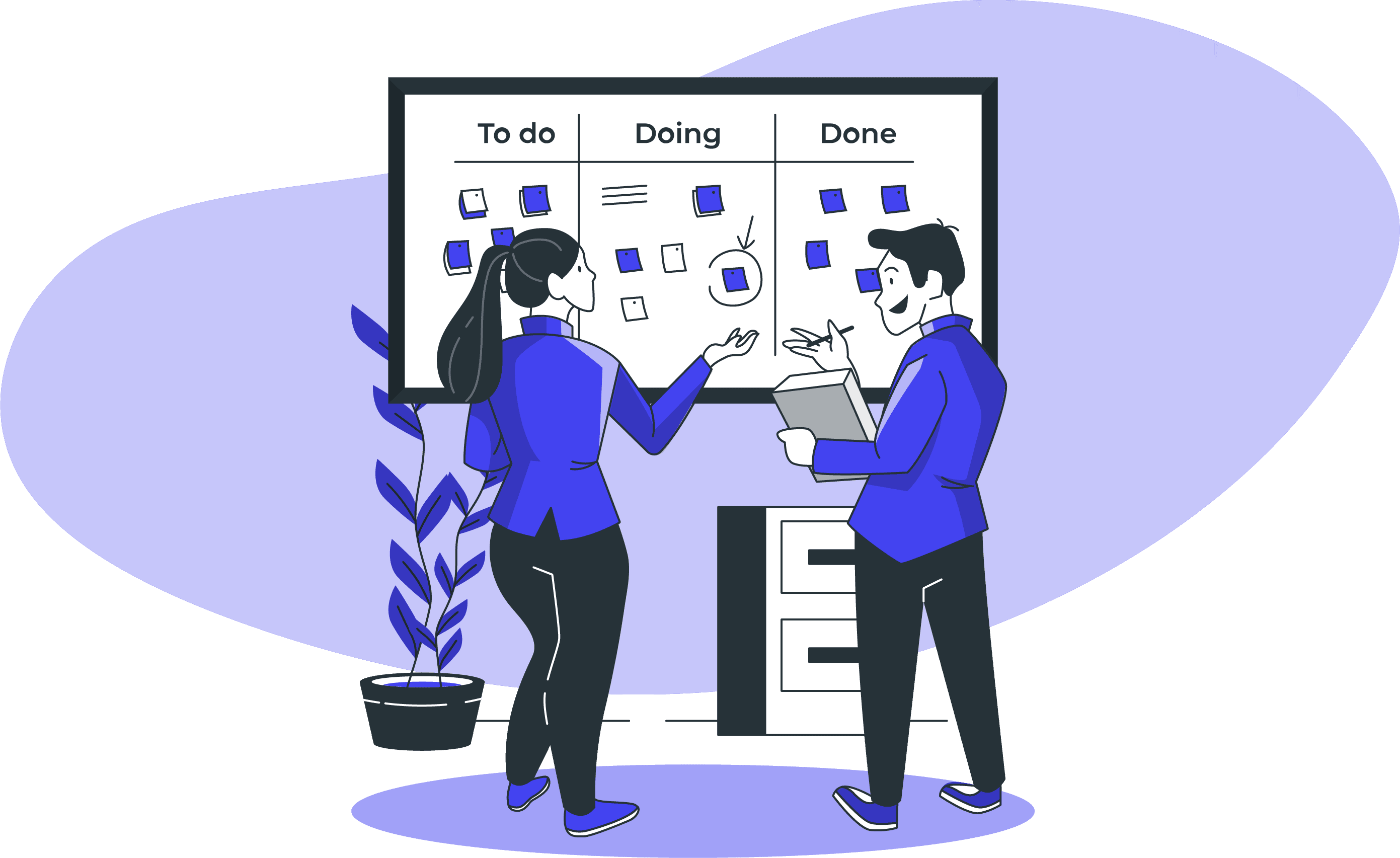Share this article:

Scrum is a part of the Agile methodology. It is the most popular framework for agile development, and it is a simple process framework.
A "process framework" is a set of rules that a process must follow in order to be in line with the framework. (For instance, the Scrum process framework calls for development cycles called Sprints, while the XP framework calls for pair programming, etc.)
"Lightweight" means that the process has as few extra steps as possible so that as much time as possible can be used to get useful work done. A Scrum process is different from other agile processes because it uses certain ideas and methods, which can be put into three groups: Roles, Artefacts, and Time Boxes.
Scrum is most often used to manage the development of complex software and products by using iterative and incremental methods. Compared to traditional "waterfall" processes, Scrum makes a big difference in how much work gets done and how long it takes to see results. Scrum processes let organisations adapt easily to requirements that change quickly and make products that meet changing business goals. An agile Scrum process helps the company because it lets it:
- Improve the quality of the products;
- Handle change better (and expect the changes);
- Estimates are more accurate and take less time to make;
- To be more in charge of the project schedule and state.
What are the requirements for Scrum?
Scrum doesn't say exactly how requirements should look. Instead, it just says that they go into the Product Backlog and are called "Product Backlog Items," or "PBIs" for short. Since a sprint has a set amount of time, we can also assume that each set should take much less time to implement than the sprint itself. Most Scrum projects take the "Extreme Programming" (XP) method of calling a feature request a "User Story," but a small number of projects still use the older term "Use Case." In this blog post, we will go with what most people think and talk about three fairly standard requirements artefacts that can be found in product backlogs.
User story
In the form of a story, a “user story” describes the desired feature (functional requirement). User stories are usually written by the Product Owner, who is also responsible for them. The format is not standard, but it usually has a name, some descriptive text, links to outside documents (like screenshots), and information about how the implementation will be tested.
Story
Not all requirements for new development are user-facing, but they all mean that a lot of work needs to be done. Most of the time, but not always, these requirements are work that needs to be done to support features that end users see. We call these requirements that don't have anything to do with the function "Technical Stories." Technical Stories have the same parts as User Stories, but they don't have to be written as stories if it doesn't help. Most of the time, team members write the technical stories that are then added to the Product Backlog. The Product Owner needs to know about these Stories and how they relate to User Stories in order to rank (sequence) them in order to be built.
Bug
A defect, also called a bug report, is a description of how the product doesn't work the way it should. Defects are kept in a system for tracking bugs, which may or may not be the same system that stores the Product Backlog. If not, the QA (usually the Product Owner) has to add each defect to the Product Backlog so that they can be scheduled and put in the right order.
Conclusion
In today's highly competitive global environment, the amount of time needed to bring new software products to market has shrunk by a factor of ten. Beginning with market research on a concept or the needs of a client, the product life cycle or system development process continues all the way through system deployment and operation. The scrum manifesto is required to rapidly develop a system and to meet changes in requirements initiated by the customer even late in the development stage. This is because of the global competition and the change in customers' needs, which resulted in the Scrum Manifesto. Scrum is becoming more and more popular, and this trend is likely to continue for many years.
SUBSCRIBE TO OUR NEWSLETTER
Share this article:





